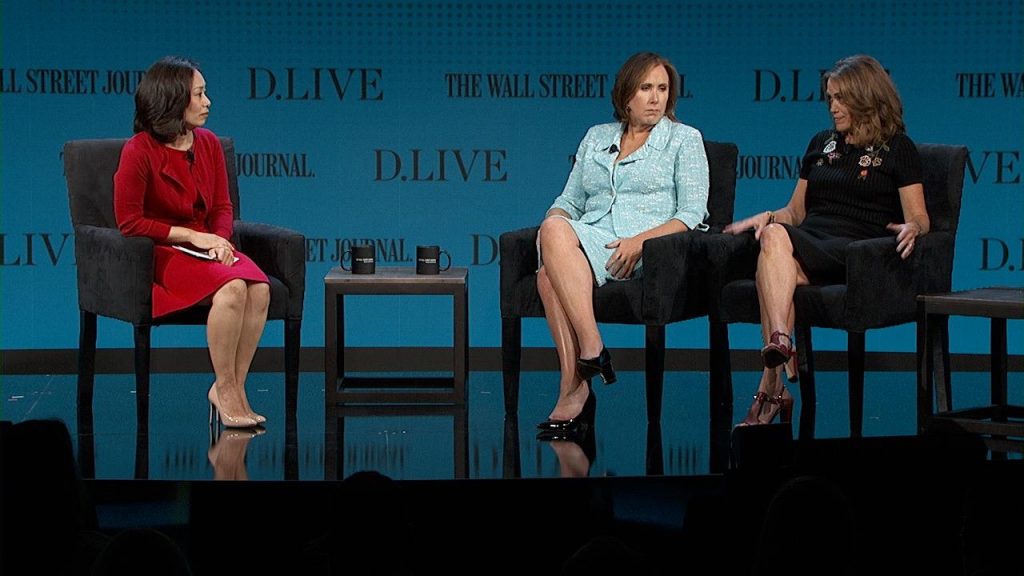
 Peggy Johnson and Jennifer Nason talk about what companies can do to fight gender discrimination at work.
Peggy Johnson and Jennifer Nason talk about what companies can do to fight gender discrimination at work.
Tech companies aren’t sticking to their bread and butter when it comes to acquisitions. In 2016, Microsoft Corp. MSFT 0.03% surprised the market with its $26 billion acquisition of LinkedIn. And this year, Amazon.com Inc. AMZN -1.69% purchased Whole Foods for more than $13 billion.
Wall Street Journal Senior Editor Yun-Hee Kim talked about mergers and acquisitions and strategic investments with Peggy Johnson, Microsoft’s executive vice president of business development, and Jennifer Nason, global chairman, investment banking at J.P. Morgan Chase & Co.
Edited excerpts follow.
MS. KIM: What is the outlook for big acquisitions?
MS. NASON: I am bullish about 2018 for activity. Money is still virtually free. The equity market has been very responsive to M&A. Prices are still high, so we’re seeing very high valuations. That is tough. But increasingly companies are looking at assets and saying, “This is just strategic for me. I need to make a move.”
MS. KIM: Peggy, one of your partnerships came as a surprise this year: the partnership with Amazon on digital assistants. You have Cortana and Alexa working together.
MS. JOHNSON: They’re talking to each other.
MS. KIM: What was the logic behind that deal?
MS. JOHNSON: It started with a conversation that Jeff Bezos and Satya Nadella had at our CEO Summit about how we’re really operating in different spaces. Jeff’s all about shopping, and that experience. We’re all about productivity and that experience. I think there was a recognition that there will be a multitude of personal agents, and could ours talk to each other?
When it was handed off to the engineering teams, then the hard work began. They figured out how you can have a seamless experience between your two devices. I think you’ll see more of that going forward.

MS. KIM: Are you open to working with companies like Apple AAPL -0.05% and Google in the AI space as well?
MS. JOHNSON: We are. We try not to look at everything through a competitive lens. Is there some shared value that together we can build more for our joint customers? Rather than fighting over a piece of the pie, can we grow the pie, is really our model.
When text messaging first came out, you could only text within your network, whatever operator you had. It seems silly now, but once those walls came down, all sorts of applications and services were built on top of that. It ended up being good for everybody.
MS. KIM: This partnership is an example of a potential expansion in the AI space?
MS. JOHNSON: Yes, AI is a big area for a lot of people right now. If we can take out some of the friction in the development process, I think we’ll start to see some of the outcomes that we’ve all been talking about and envisioning.
MS. KIM: Jennifer, a lot of rivals in tech are partnering and working on emerging technologies. Will this be a trend?
MS. NASON: It’s certainly more capital efficient. Sometimes you just can’t go out and buy everything. M&A is hard, time-consuming, and it doesn’t always work. So some of these partnerships can be a good way to have a bet in a certain area and see how it plays out.
MS. KIM: We’re seeing a lot of software companies going after hardware, and hardware companies going after software. Jennifer, will that trend continue in the industry?
MS. NASON: Yes, there are many examples. But the big hardware of the future is going to be the autonomous vehicle, and the networks that are going to those vehicles, the software, all the technology, the content.
MS. KIM: Which companies are in best position?
MS. NASON: I would never underestimate the big OEMs [original equipment manufacturers], so Ford F -0.50% and General Motors . GM -1.01% We know there’s a lot going on there. Thousands of companies are trying to raise private equity for elements of the autonomous vehicle.
MS. KIM: What is Microsoft doing in this space?
MS. JOHNSON: We’re enabling that space. We’ve come out with our connected-vehicle platform, which takes care of a lot of the plumbing, if you will, that the car needs to go through; the aggregation of data from all of the different sensors, off-loading it, and analyzing it in the cloud. We’ve looked at a set of tools that can enable OEMs in the space.
MS. KIM: What is Microsoft’s next big growth opportunity?
MS. JOHNSON: We have a big focus in AI. Just over a year ago we announced a reorganization. We’ve had AI on our campus for about 25 years, so we’ve put a lot energy into that, and this reorganization will help refocus even more.
MS. KIM: You are both rare female senior leaders in your industries. What can companies do to promote more women into senior roles?
MS. NASON: Well, if they could just send an email out tomorrow, and promote a bunch of people. (LAUGHTER) I hope Jamie Dimon is listening.
I’ve invested more time and effort in diversity committees and panels, and generally it’s women talking to other women about how to fix it. I think that’s been a big tactical mistake on our part to talk to each other, rather than to involve the men, and particularly the men who are typically in power at a lot of these organizations.
MS. JOHNSON: I’m an electrical engineer, and when I first started out, there was nobody who looked like me out there. I worked at Qualcomm , and I remember coming into meeting rooms, and I could never get the floor. I could never get my opinion across. And I thought at one point, “I’m just going to drop out.”
My manager at the time said, “Don’t do that. How can we fix things?” And I said, “Well, just throw me the ball. I have something to say, but it’s hard to interject.” And he started doing that. That’s when my career really took off. So I’ve tried to do that over and over, you know, going forward with any team or group of people, make sure everybody is heard. It’s very important, whether you’re a quiet man, or a quiet woman.
[“Source-wsj”]



